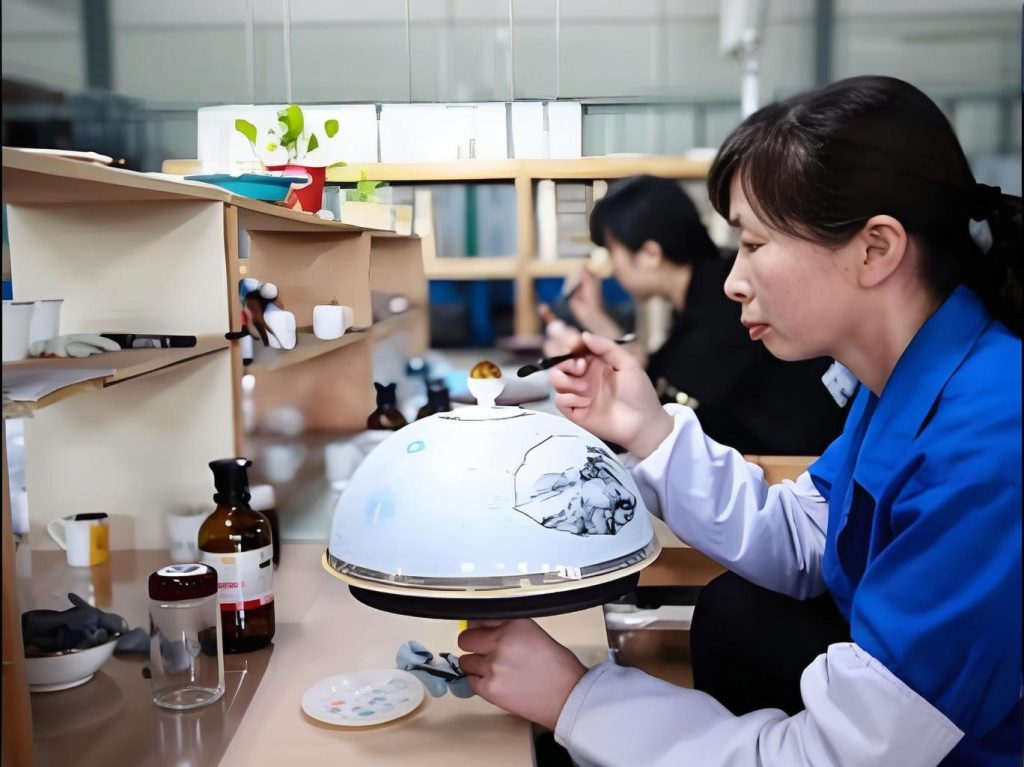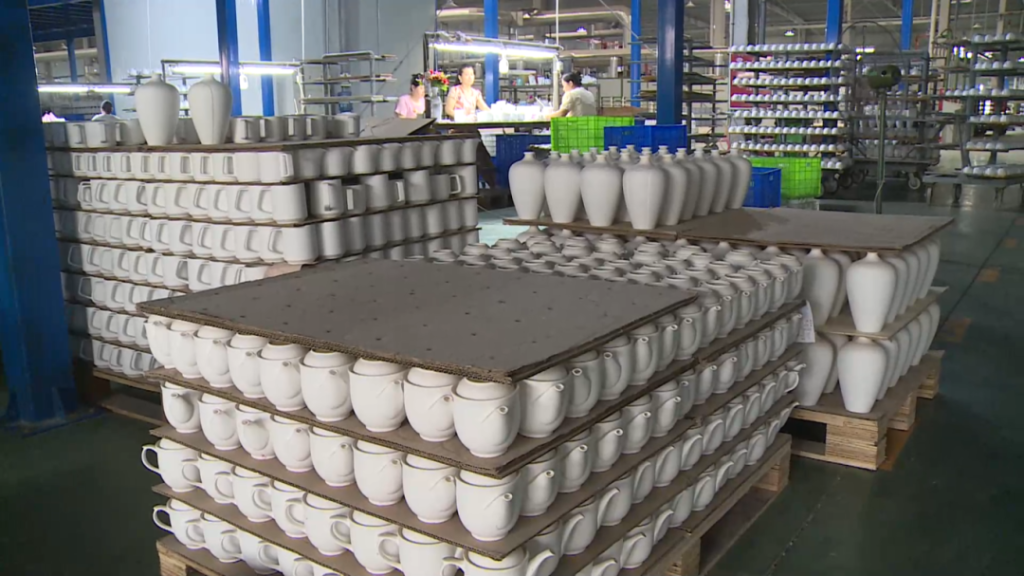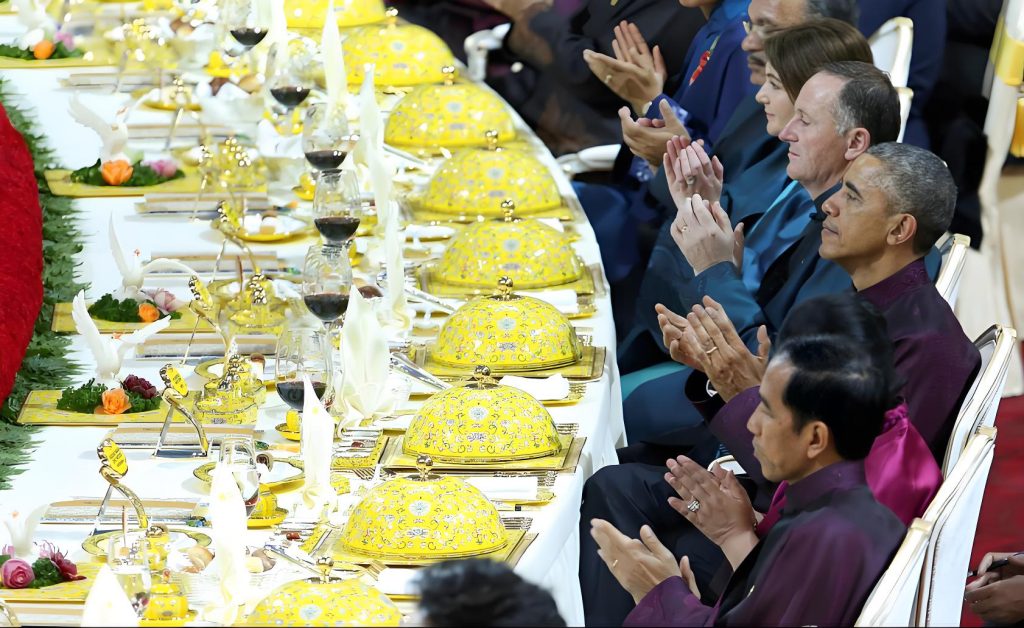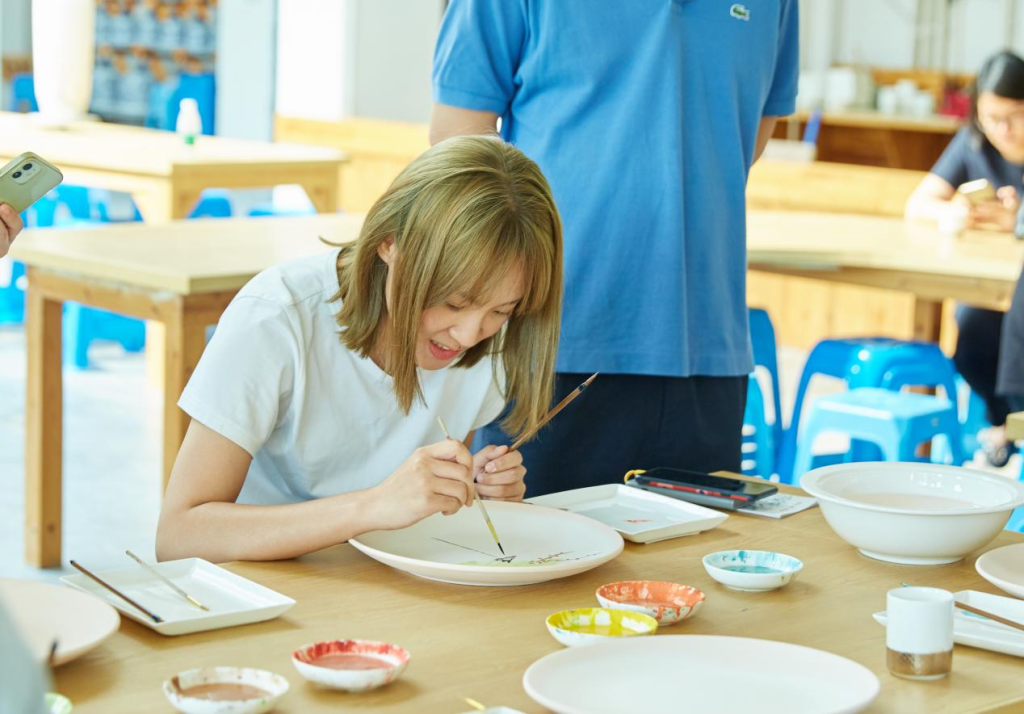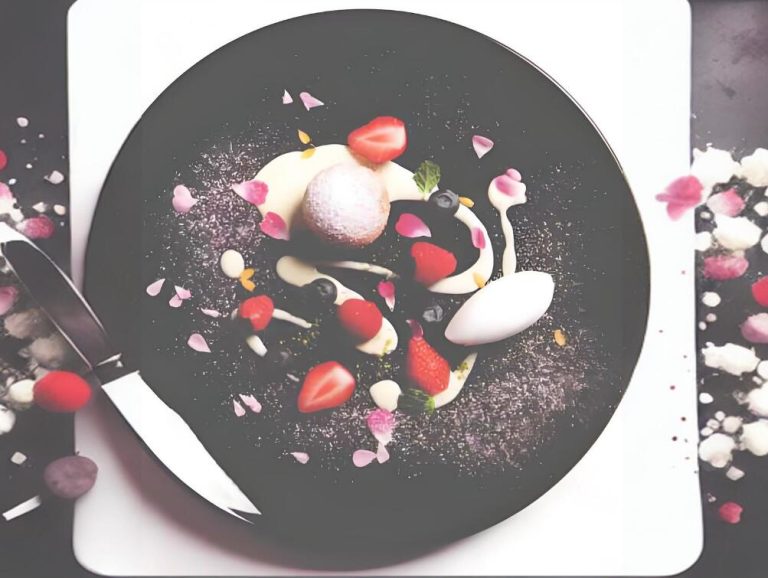Gold-Rimmed Dinnerware: From Table Rituals to Global Supply Chains
Why Is Everyone Suddenly Buying Gold-Rimmed Dishes?
I first noticed gold-rimmed dinnerware while scrolling Instagram one weekend.
On screen was a brunch photo. Sunlight filtered through sheer curtains. It hit the delicate gold rim on a white porcelain plate. The avocado toast suddenly looked special. It became “a lifestyle worth posting about.”
I checked the comments. Several people asked: “Where did you buy this plate?”
This made me curious. Why does a gold rim triple the price? What are people actually paying for?
I explored Quora and Reddit with these questions. The discussions about gold-rimmed dinnerware were more interesting than I expected.
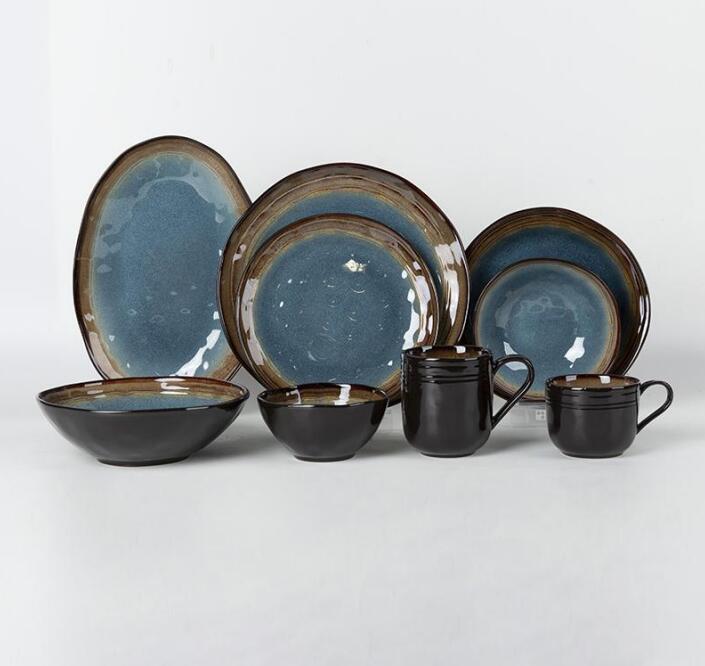
The “Expert Perspective” on Quora: Gold Rims Aren’t Just Decoration
1. Psychology Angle: Ritual Matters
A top-voted Quora answer came from a consumer psychology professor. He made an interesting point.
“Gold-rimmed dinnerware popularity reflects middle-class search for ‘micro-rituals’ in daily life. When people can’t frequently dine at fancy restaurants, they buy dishes with premium symbols. They recreate that experience at home.”
This makes sense.
Think about it. You eat instant noodles from a disposable bowl. Now use a gold-rimmed bone china bowl. Does it feel the same? The latter makes you arrange things nicely. You add vegetables. You take a photo. That’s the magic of ritual.
2. Craft Perspective: Real Gold or Fake?
Another hot topic: “Is the gold rim actually gold?”
A tableware manufacturer with 20 years’ experience gave professional answers:
- Real Gold Rim: Uses 22K or 24K gold powder. Fired at 800°C. Never fades. But no microwave or dishwasher.
- Gold-plated: Electroplating process. Low cost. Peels over time.
- Gold-colored glaze: Cheapest option. Poor visual effect. Looks like “plastic gold.”
He revealed an industry secret:
“Many people discover their $7 ‘gold-rimmed plate’ fades after three months. Real gold-rimmed dinnerware costs at least $15 per piece.”
This explains the huge price range. You think you’re buying “ritual sense.” You might actually get “cheap feeling.”
The “Real Experience” on Reddit: Disaster Stories and Buying Guides
Quora offers rational analysis. Reddit delivers hard lessons.
Disaster Case 1: Dishwasher Tragedy
A user posted on r/HomeDecor:
“I bought gorgeous gold-rimmed dinnerware. Used it three times. Then threw it in the dishwasher. Now the gold rim is half gone. Looks like a dog chewed it.”
Comments exploded:
- “Didn’t you see ‘Hand Wash Only’ in the instructions?”
- “Real gold rim plus high temperature plus strong alkaline detergent equals chemical reaction. This is common sense, friend.”
- “I did the same stupid thing. Now I use those plates to feed my cat.”
Disaster Case 2: Microwave Firework Show
Another top post had a striking title:
“PSA: Don’t microwave gold rim dishes unless you want a firework show”
The poster described:
“I heated leftover rice. The microwave started flashing lightning. I got scared and unplugged it immediately. Later I learned metal creates arcs in microwaves.”
Someone added: “Not just real gold rims. Some glazes contain metal oxides. Same problem.”
Good Experiences: When Do You Actually Need Gold-Rimmed Dinnerware?
Many positive shares exist too. One Reddit user summarized her experience:
Suitable Scenarios:
- Holiday gatherings (Christmas, Thanksgiving)
- Food photography (natural light plus gold rim equals premium filter)
- Afternoon tea (especially matches coffee or tea)
- Gifts (looks classier than regular dinnerware)
Not Suitable For:
- Daily meals (too delicate, washing is troublesome)
- Homes with kids (breaking them hurts)
- Renters (fragile when moving)
Her conclusion: “Treat gold-rimmed dinnerware like ‘high heels for your table.’ You don’t wear them daily. But they shine when it matters.”
Manufacturing Secrets: A Tableware Manufacturer’s Confession
During my research, I contacted a tableware manufacturer in Chaozhou, Guangdong. Their factory makes gold-rimmed dinnerware for European and American brands.
He revealed several interesting points:
1. Pricing Logic: “Gold Rim” Is Only 5% of Cost
“Many think gold-rimmed dinnerware is expensive because of gold. That’s wrong. Real cost breakdown:
- Bone china or kaolin material (40%)
- Firing process (double-firing, high energy, 30%)
- Manual gold application (hand-painted is 3x more expensive than decals, 15%)
- Quality inspection (20% defect rate for gold-rimmed dinnerware, 10%)
The gold powder itself? Only about 5%.”
2. Why Are Western Brands So Expensive?
“Same factory, same process. Put a Western brand label on it. Price increases fivefold. What’s the difference?
- Design patent fees
- Brand premium
- Packaging and marketing costs
Chinese brands can make quality products. But consumers trust ‘foreign moon is rounder’ more.”
3. Industry Pain Point: Environmental Pressure
“Environmental regulations cause the most headaches now. EU has strict lead and cadmium limits for dinnerware. Some gold-colored glazes we used before are now banned. Developing new formulas takes at least six months. Costs jump 30% directly.”
This made me realize something. Buying qualified gold-rimmed dinnerware involves an entire manufacturing industry. They struggle with technology upgrades and environmental compliance.
Buy or Not? A Practical Decision Framework
After all this discussion, back to the original question. Is gold-rimmed dinnerware worth buying?
My suggestion: Don’t rush. Ask yourself three questions first.
Question 1: Will You Hand-Wash Dishes?
If the answer is “no,” give up immediately. Gold-rimmed dinnerware equals delicate. This is unavoidable.
Question 2: How Often Do You Host Parties?
Less than three times yearly? Buy a few gold-rimmed cups and saucers. Skip the full set.
Frequent hosting? Consider investing. But buy matching styles. Don’t mix Baroque with minimalist.
Question 3: What’s Your Budget?
- Under $15/piece: Likely fake gold rim or low-end bone china. Good for “photo needs.”
- $30-75/piece: Mid-range real gold rim. Daily use plus occasional display.
- Over $75/piece: Premium brand or hand-painted. Collection level.
My Personal Choice?
I finally bought 4 gold-rimmed plates plus 4 gold-rimmed coffee cups. Not a full set. But enough when friends visit. I brew coffee. I slice cake. I pretend to be “someone who knows how to live.”
Usually? I still use IKEA white plates.
Some Trivia You Might Want to Know
- Why are gold rims usually “narrow”?
Wider rims crack more easily during firing. Hand-painted wide gold rim dinnerware has 40% defect rate. - Why can’t you stack gold-rimmed dinnerware?
Gold rims protrude. Stacking creates friction. Color fades over time. Use separator paper or velvet bags. - What’s the difference between “hand-painted gold” and “decal gold”?
Hand-painted has line thickness variations. Decals have hard edges. The former costs 10x more. - How long does gold-rimmed dinnerware last?
With proper use (hand-wash, avoid impacts), real gold rims last a lifetime. I’ve seen 50-year-old gold-rimmed tea sets from grandmas. Still shining bright.

Ending: The Meaning of Dinnerware May Not Lie in the Dinnerware Itself
Writing this far, I suddenly remembered a Haruki Murakami quote from “If Our Language Were Whiskey”:
“Ritual sense makes ordinary days shine.”
Gold-rimmed dinnerware might be that kind of thing.
It won’t suddenly improve your cooking. It won’t automatically make life refined. But it reminds you: even eating alone deserves care. Even an ordinary Wednesday night deserves thoughtful arrangement.
Should you buy it?
If you’re still hesitating after reading this, the answer might be “not urgent.” Real ritual sense never comes from buying stuff.
But if you’ve already quietly opened a shopping website…remember:
- Check if it’s real gold rim
- Confirm you can hand-wash
- Don’t buy too much at once
Then enjoy the small happiness that gold rim brings.
If you have any questions or need to custom dinnerware service, please contact our Email:info@gcporcelain.com for the most thoughtful support!


